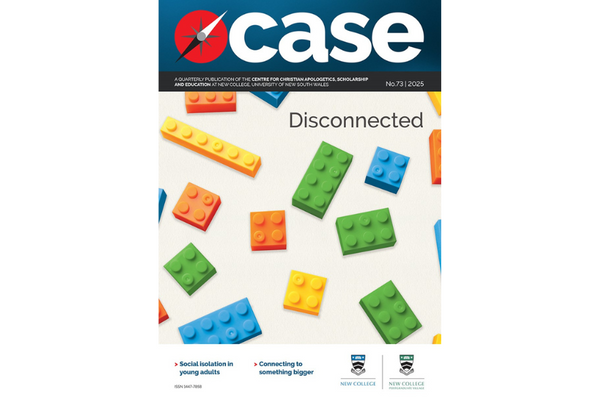Book Review: Just Sex?

Guy Brandon is a researcher at the Jubilee Centre (www.jubilee-centre.org). This organisation seeks to advance a social agenda which is simultaneously true to the Bible, beneficial for everyone in contemporary society, and persuasive to non-Christians. Consistent with this, Just Sex explodes the popular myth that sex is merely a private act between two consenting adults. Drawing on psychological, social, financial, and demographic data, Brandon demonstrates that the ‘private’ act of sex has wide ranging ‘public’ consequences. It impacts not only on the couple having sex, but on their family, their social group, their local community, and ultimately the whole of society itself. It is never ‘just sex’. To have a healthy society, with healthy people who enjoy healthy sex, we need to see sex in this relational, social framework—which is actually God’s framework.
This private, consensual view of sex is a symptom of the larger social problem of radical, narcissistic individualism, which Brandon, drawing on Kuehne, calls the ‘iWorld’. People believe the purpose of life is to achieve self-fulfilment, without reference to anyone else. Sex therefore becomes a commodity to be used for personal pleasure and self expression. This supposedly ‘liberated’ view of sex has not led to personal happiness and wholeness, but to wholesale misery. Drawing on data from the sexual revolution and beyond, Brandon attributes many contemporary social problems—dysfunctional families, single parent families, rising divorce rates, promiscuity, abortion, adultery, prostitution and STIs—to the lack of awareness of the relational consequences of sex.
Against this, Brandon sets the Biblical view of sexuality. Consistent with the Jubilee Centre’s general approach, this book sets sex within the ‘relational order’ that God has wired into this universe. Humans are primarily relational beings, made in the image of God, who is Trinity: he is relationship. As relational beings, our primary need is not pleasure, but intimacy: the ability to be honest and real with someone, and be confident of their unconditional acceptance. This kind of intimate relationship is found in families and friends, as well as marriage. Heterosexual marriage provides the kind of clear, stable relationship in which sex leads to increased intimacy and personal growth. Separated from this kind of clear, stable relationship— that is, apart from heterosexual marriage—sex actually destroys intimacy, by reinforcing the inward, self-centred habits of the iWorld. Brandon persuasively demonstrates how modern Western culture substitutes sexual pleasure for relational intimacy, and thereby stunts personal and social maturity.
In the face of such unhealthy, destructive secular sexual behaviour, Brandon encourages churches to be wholesome counter-cultures. Churches must not merely be places for formal ‘worship’, but must be supportive relational communities, where Christians of both genders, from all ages and stages of life, can have appropriately intimate relationships. While recognising that ultimately law cannot replace morality, Brandon suggests that government programs and legislation should be informed by a relational viewpoint rather than by individual rights. This relational view encourages mature relationships and personal responsibility, leading to an increase in social and individual health.
Brandon makes good use of sociological and psychological data in his argument for the relational order of sex. Recent research by secular sexologists such as Rosemary Basson, Helen Fisher and Erick Jannsen demonstrates that there is a biological basis for committed, long term heterosexual relationships.[1] This research demonstrates that our bodily sexual biology operates best in clear, stable sexual relationships. Reference to this biological research would have further strengthened Brandon’s argument.
Brandon’s concept of the relational world order is a new take on the ancient idea of ‘natural law’. Natural law asserts that God designed the world with an order that is accessible to all people, and may thereby serve as a basis for shared morality. Historically, Thomas Aquinas was its most famous proponent. Recasting natural law in terms of ordered relationships is helpful for three reasons. First: in terms of ethical methodology, it avoids impersonal legalism and focuses on personal relationships. Law is not an end in itself; it is meant to provide the clarity and stability that permit relationships to flourish. Second: theologically, focusing on relational order permits a simple means to introduce God’s nature as Trinity, and God’s covenantal dealings with humans, into social discussion. ‘God-talk’ and ‘gospel-talk’— theology and evangelism—becomes a natural part of how we discuss the world. Third: apologetically, the way we talk about God is not merely as a judge who enforces the rules, but as a Father who loves his children and is grieved when we spurn him.
Brandon’s strongest theological underpinnings for the relational order of sex are the Trinity, covenant, and the relational framework of the Old Testament civil law. His engagement with the New Testament is not as strong. He rightly uses 1 Cor 6 to affirm both that any sexual transgression can be forgiven, and that Christian sexual relationships must be transformed. He also rightly points to Paul’s affirmation of singleness in 1 Cor 7. But his analysis of the four Greek words for love owes more to C. S. Lewis than the Bible. The New Testament does not uniquely use agape to mean covenantal loyalty, and phileo to mean friendship; the two words can be synonymous, it depends on the context.
Most worryingly, Brandon does not have a clear focus on the centrality of Christ, especially his death and resurrection, in re-establishing the relational order as God intended it. The book often refers to the connection between relationship with God and our relationship with one another, including a brilliant overview of how idolatry and sexual promiscuity coincides in the Old Testament. But, the book does not clearly demonstrate how, according to the New Testament, Christ’s death and resurrection both re-establishes relationship with God, and with each other.
This oversight is both disappointing and dangerous. It is disappointing because the relational principles embodied in Christ, and enacted in his death and resurrection, are totally in line with Brandon’s concept of relational order. Jesus’ death and resurrection is the highest enactment of God’s other-focused, generous, fellowship-creating love. Christian growth in maturity is growth in Christ-likeness: growth in trying to show others this kind of love. It is dangerous because losing clarity on Christ risks losing clarity on the gospel. The central, authoritative message of the Bible is not good sex, nor even a healthy society in this world. It is that Jesus’ death and resurrection re-establish society between us and almighty God. By not highlighting the centrality of Christ, this book may unintentionally affirm a new self-obsession. Not an individualistic self-obsession, but an obsession with the potential of co-ordinated human activity to create a healthy society—reminiscent of both Enlightenment humanistic optimism, and the Tower of Babel.
But what the book overlooks does not detract from what it contains. Its critique of contemporary sexual obsession is excellent, its concept of relational order is insightful, and its call for churches to be relationally healthy communities is inspiring. A recommended read.
[1] Bancroft, John et. al. (2009). ‘The Dual Control Model: Current Status and Future Directions.’ In Journal of Sex Research, 46:2-3, pp121–142. Basson, Rosemary (2007). ‘Working to Normalise Women’s Sexual Reality’, In The Lancet, 369: 3, pp343-436. Basson (2007). ‘Recent Conceptualization of Women’s Sexual Response’, In Menopause Management, May/June, pp16-30. Young, Larry (2009). ‘Love: Neuroscience Reveals All’, In Nature, 457, p148. Zeki, S. (2007). ‘The Neurobiology of Love.’ In Federation of European Biochemical Societies, 581: pp 2575–2579.
Leave a comment
Comments will be approved before showing up.



